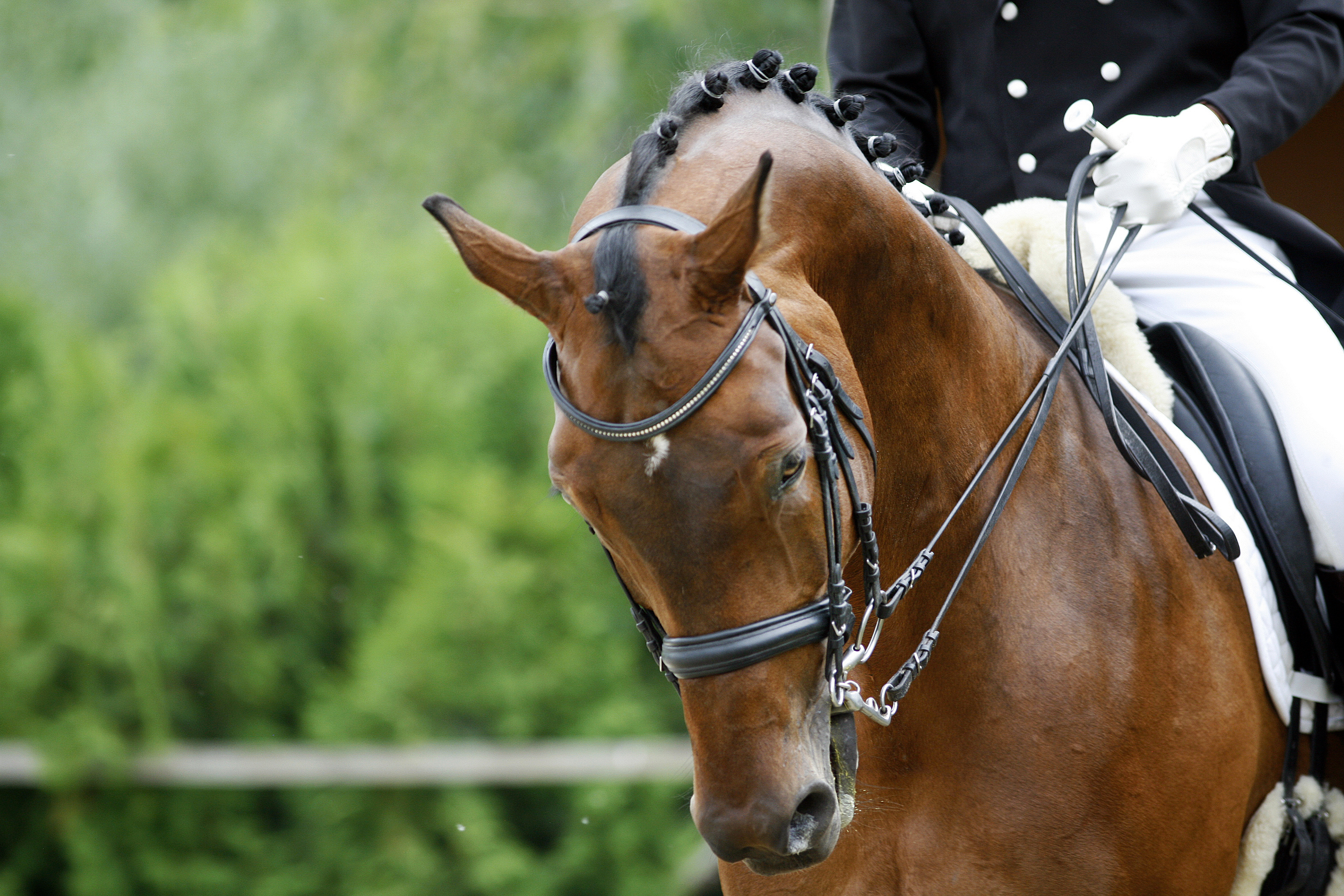Home > Horse World > How head carriage affects stress levels
How head carriage affects stress levels
- June 29, 2023
- ⎯ Equus
Horses ridden with an overly flexed head carriage experience greater degrees of physiological stress than those ridden in more relaxed “frames,” according to a new study from Europe.

Researchers at three institutions—Aarhus University in Denmark, Utrecht University in the Netherlands and Ghent University in Belgium—joined forces to study the reactions of seasoned dressage horses to being ridden in a “hyperflexed” head position.
“Hyperflexion is the term that has been used to describe a range of head-and-neck positions from where the chin nearly touches the chest to where the nasal plane is slightly behind the vertical,” says Janne Christensen, PhD.
While this head position is often associated with dressage, it is also seen in other disciplines, says Christensen. “I cannot answer about the rationale behind it, other than some riders and trainers argue that it trains flexibility, but there may be other reasons. For show jumpers it may relate to a poor response to rein signals. For instance, the rider may find it easier to control the horse in the hyperflexed position.
”Hyperflexion has long been the subject of controversy, with critics warning of its effects on a horse’s physical and mental well-being. To provide hard data for such discussions, Christensen and fellow researchers set out to investigate behavioral and physiological stress responses of horses ridden in various headsets. The study included 15 experienced dressage horses who were worked by their usual riders.
For three study sessions, the horses were ridden through predetermined 10-minute tests that included work at the walk, trot and canter. In each session, the horse had a different headset:
• a competition frame, in which the head was positioned so the nasal plane (the front of the face) was aligned “on the vertical”
• a “low, deep and round” frame with head positioned “behind the vertical”
• a “looser” frame, in which the rider aimed to keep the reins as loose as possible and did not request a specific head position
The riders ultimately decided exactly how the horse’s head would be held in each category, but rides were videotaped for later measurements to ensure that the head positions differed between the tests.
The horses were outfitted with monitors to record their heart rates as well as their heart rate beat intervals as they worked. Salivary samples were collected before and after each ride and tested for levels of cortisol, a hormone associated with stress. In addition, the horses were monitored for behavioral signs of stress, such as head tossing.
The data showed that horses had significantly higher cortisol concentrations immediately after being ridden in a low-deep-round frame compared to the looser frame. More head movement—indicative of stress—were also observed during low-deep-round riding. No difference was detected in heart rate or heart-rate intervals, but the researchers say that could be because the intensity of the dressage program was too high to detect possible differences in HR and HRV. Overall, the data suggests that the horses found the deeper frame more stressful. “The horses in our study were accustomed to hyperflexion as part of their usual training, so novelty could not account for the increased stress response,” says Christensen.
The researchers conclude that “there may be beneficial physical effects of [a low-deep-round frame] that warrant its use as a training tool as long as riders and trainers are aware of the potentially increased stress induced by the training method.”
Don’t miss out! With the free weekly EQUUS newsletter, you’ll get the latest horse health information delivered right to your in basket! If you’re not already receiving the EQUUS newsletter, click here to sign up. It’s *free*!





